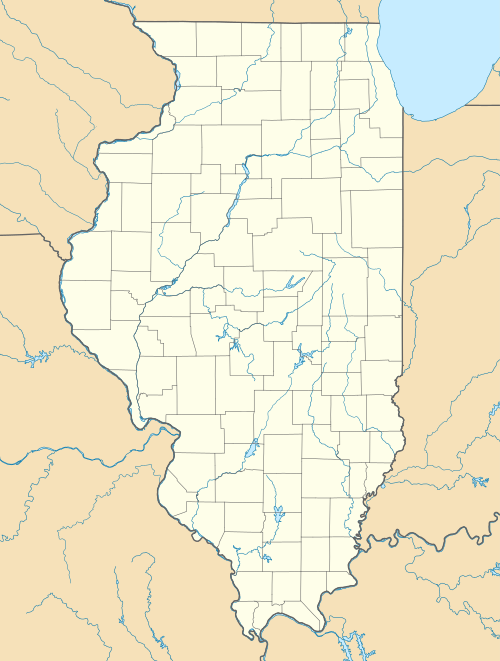| Facility Level | Security Features | Eligible Security Classifications | Notes |
|---|
| 1 | Very Strong Perimeter, Majority of Offenders Housed in Cells, Guard Towers, Limited Movement No Day Room | All Levels, Grades, and Escape Risks | A limited group of offenders are granted OUTSIDE CLEARANCE to work outside the perimeter for certain tasks. These offenders must be designated 3AL and have an in depth security analysis performed to be eligible. Certain crimes would preclude an offender from ever attaining this designation. Stateville Correctional Center utilizes Stateville Minimum Security Unit attached to the Northern Reception and Classification Center on the Stateville Campus (also a Level 1 facility) to house these offenders. Pontiac Correctional Center utilizes the Pontiac Medium Security Unit to house these offenders. Menard Correctional Center utilizes the Menard Medium Security Unit to house these offenders. |
| 2 | Very Strong Perimeter, Offenders Housed in Cells, Guard Towers, Escorted Controlled Movement Limited Day Room Time (21 hours in cell, 3 hours out) | Security Levels 2 and 3, All Grades, Escape Levels L, M, H | A limited group of offenders are granted OUTSIDE CLEARANCE to work outside the perimeter for certain tasks. These offenders must be designated 3AL and have an in depth security analysis performed to be eligible. Certain crimes would preclude an offender from ever attaining this designation. |
| 3 | Very Secure Perimeter, Offenders Housed in Cells, Guard Towers, Controlled Movement (pass system) Day Room Time (18 hours in cell, 6 hours out) (all except Dixon and Pontiac MSU) Day Room Time (After breakfast until 10:00pm except count periods) (excluding Dixon Reception which is 18/6) and Pontiac MSU) | Security Levels 2 and 3, All Grades, Escape Levels L, M | A limited group of offenders are granted OUTSIDE CLEARANCE to work outside the perimeter for certain tasks. These offenders must be designated 3AL and have an in depth security analysis performed to be eligible. Certain crimes would preclude an offender from ever attaining this designation. |
| 4 | Very Secure Perimeter, Offenders Housed in Cells, Guard Towers, Controlled Movement (pass system) Day Room Time (After breakfast until 10:00pm except count periods) | Security Levels 2 and 3, All Grades, Escape Level L (there are limited exceptions for offenders assigned to Escape Level M) | A limited group of offenders are granted OUTSIDE CLEARANCE to work outside the perimeter for certain tasks. These offenders must be designated 3AL and have an in depth security analysis performed to be eligible. Certain crimes would preclude an offender from ever attaining this designation. |
| 5 | Secure Perimeter, Offenders Housed in Dorms, Guard Tower, Controlled Movement (pass system) Day Room Time (After breakfast until 10:00pm except count periods) | Security Level 3, All Grades, Escape Level L (there are limited exceptions for offenders assigned to Escape Level M) | A limited group of offenders are granted OUTSIDE CLEARANCE to work outside the perimeter for certain tasks. These offenders must be designated 3AL and have an in depth security analysis performed to be eligible. Certain crimes would preclude an offender from ever attaining this designation. |
| 6 | Secure Perimeter, Offenders Housed in Dorms, Controlled Movement (pass system) Day Room Time (After breakfast until 10:00pm except count periods) | Security Level 3, Grades A and B, Escape Level L | A limited group of offenders are granted OUTSIDE CLEARANCE to work outside the perimeter for certain tasks. These offenders must be designated 3AL and have an in depth security analysis performed to be eligible. Certain crimes would preclude an offender from ever attaining this designation.
No sex offenders may be housed at this level.
|
| 7 | Minimal Unlocked Perimeter, Offenders Housed in Dorms, Open Movement (with certain controls) Day Room Time (After breakfast until 10:00pm except count periods) | Security Level 3, A Grade Only, Escape Level L | All offenders at this level would be considered as having OUTSIDE CLEARANCE as a matter of security designation and be allowed to work on supervised crews in the community. These offenders must be designated 3AL and have an in depth security analysis performed to be eligible. Certain crimes would preclude an offender from ever attaining this designation.
This classification also applies to all offenders assigned to the Impact Incarceration Program.
No sex offenders may be housed at this level.
|
| 8 | No Perimeter, Offenders Housed in Dorms, Work Release Setting | Security Level 3, A Grade Only, Escape Level L | This designation is for work release transitional facilities. These offenders are integrated within the community in a highly controlled and supervised manner. This designation is similar to parole with the exception that periodic custody is still retained and the level of supervision is much higher.
No sex offenders may be housed at this level.
|


